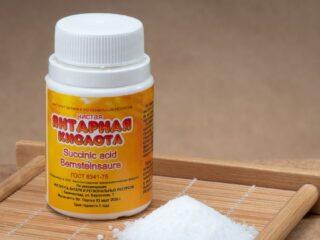Content
- 1 Composition and release form
- 2 Operating principle
- 3 Advantages and disadvantages
- 4 Preparation of working solution
- 5 Instructions for use of the drug Magnum against weeds
- 6 Compatibility with other tools
- 7 Security measures
- 8 Analogues
- 9 Conditions and shelf life
- 10 Conclusion
- 11 Customer reviews about Magnum weed killer
Magnum herbicide is a systemic preparation of selective action used to destroy annual and some types of perennial weeds in fiber flax and grain crops. The high efficiency of the chemical makes it advisable to use it to clear virgin lands and non-agricultural areas from unwanted vegetation.

To destroy weeds in a grain field, a single application of Magnum herbicide is sufficient.
Composition and release form
The active ingredient of Magnum herbicide is metsulfuron-methyl, which belongs to the class of sulfonylureas. The content of the active component in the finished product is 60%.
Manufacturers of pesticides offer farmers another herbicide called Magnum Super, which contains metsulfin-methyl (30%) and tribenuron-methyl (45%).
The drug is produced in the form of water-soluble granules, packaged in 100 g plastic bottles.
The manufacturer of Magnum and Magnum Super is the August company.

The herbicide is produced in easy-to-use packaging
Operating principle
Penetrating through foliage and roots into plant cells, the active component of the herbicide Magnum VDG suppresses the formation of substances necessary for DNA biosynthesis and stops cell division.
Under the influence of the drug:
- the growth of green mass of plants and the development of the root system stops;
- flower buds do not open;
- the above-ground parts of the weeds acquire an anthocyanin tint, that is, they become pink-red;
- the veins on the leaves become discolored;
- the tops of the weeds dry out;
- the development of chlorosis and tissue necrosis is observed.
The first results of the herbicide can be seen a couple of days after treatment, and the complete death of weeds occurs within 1-3 weeks.
Magnum herbicide is effective throughout the entire growing season of cultivated plants.

Contact of herbicide with vegetable crops will lead to their death
Advantages and disadvantages
One of the main advantages of the Magnum VDG herbicide against weeds, which has received many positive reviews, is that it does not have a negative effect on the growth and development of grain crops and flax, acting exclusively on weeds.

Magnum will cope even with difficult to remove sow thistle
Pros:
- high efficiency;
- selective action (works exclusively on weeds);
- rapid clearance of non-agricultural areas;
- cost-effectiveness of the drug;
- wide spectrum of action;
- possibility of using cultivated plants during the growing season;
- affordable price and convenient release form.
Minuses:
- destructive effect on vegetable crops, sunflower and buckwheat;
- emergence of resistance with long-term use;
- long half-life on alkaline soils;
- the need for deep plowing of the soil after using the herbicide;
- introducing restrictions on crop rotation;
- the impossibility of spraying by air near ponds with fish and fields with vegetable crops.
Preparation of working solution
Preparation of the working solution is not particularly difficult.
During work:
- the amount of Magnum herbicide specified in the instructions is poured with a small amount of water;
- stir the composition until the granules are completely dissolved;
- fill the sprayer tank halfway with water and turn on the mixer;
- stirring continuously, add the prepared mother liquor;
- add water to the required volume.
The working solution is ready for use.

Fields are cultivated using a tractor
Instructions for use of the drug Magnum against weeds
Magnum herbicide is used to kill weeds in early spring or during the period of their active growth.
Treating fields with this drug helps get rid of:
- ragwort;
- common warthog;
- hogweed;
- thistle;
- Veronica ivy;
- vetch;
- tender geranium;
- different types of knotweed;
- field mustard;
- reveler;
- jaundice;
- chickweed;
- field cabbage;
- stinging nettle;
- common ragwort;
- buttercup;
- quinoa;
- coltsfoot;
- dandelion;
- sow thistle;
- plantain;
- wormwood;
- shepherd's purse;
- pikulnik;
- weedy sunflower;
- field chamomile;
- wild radish and other weeds.
The rate of use of the herbicide for the treatment of spring and winter grain crops, as well as fiber flax, is 8-10 g/ha. To clear weeds from non-agricultural lands (roadsides, security power lines, railway embankments, airfields, etc.), the consumption of the drug is increased to 50-300 g/ha.
When spraying 1 hectare using ground transport, you will have to spend 200-300 liters of working solution. Airborne tillage of fields makes it possible to reduce the consumption of the finished product to 50 l/ha.
The drug can be used in any weather, however, with increased air humidity, the effectiveness of treatment increases.
After applying the Magnum herbicide, vegetable and legume crops, root crops, sunflowers and buckwheat cannot be sown in the treated fields the next year without preliminary deep plowing.

Fields must be treated in accordance with the instructions for using the herbicide.
Fields must be treated in accordance with the instructions for using the herbicide.
Compatibility with other tools
Experts allow the combination of Magnum herbicide with other drugs in the process of preparing tank mixtures. In some cases, this helps improve the effectiveness of the agrochemical and expand its spectrum of action.
Suitable companions for Magnum in the process of processing grain crops can be the herbicides Demetra, Ballerina, Zernomax, Herbitox.To protect against fiber flax weeds, the drug is combined with Herbitox, Lontrel-300 or Miura.
A solution prepared from equal parts of Magnum and Tornado will help to destroy vegetation on non-agricultural objects.
It is not recommended to mix the herbicide with organophosphate insecticides, or to treat crops with insecticidal preparations earlier than two weeks after treatment with Magnum.
Attention! In the process of preparing the working solution, Magnum is poured into the sprayer tank first.
Security measures
Despite the fact that Magnum herbicide is not toxic to humans and warm-blooded animals, certain safety rules must be followed when working with it.
Experts recommend:
- Use the drug no more than once every three days.
- Avoid contact of the chemical with exposed areas of the body and mucous membranes. To do this, you need to use closed clothing and high shoes, a respirator and safety glasses.
- Spray the fields in not too hot, windless weather (under the influence of active sunlight, the effectiveness of the herbicide may decrease).
- Do not use the drug in close proximity to stocked reservoirs and plantings of sunflower, buckwheat and vegetable crops.
- After work, take a shower and wash your work clothes.
- Dispose of unused solution (pour it down the drain).
- If the drug gets on the mucous membranes of the eyes or mouth, rinse them immediately with plenty of running water.

There are special protective equipment for working with pesticides
Analogues
As analogues of Magnum, selective herbicides can be used, the active substance of which is metsulfuron-methyl. The most common today are Terramet, Laren Pro, Grench.
Conditions and shelf life
In unopened original packaging, Magnum herbicide retains its beneficial properties for five years. The chemical should be stored in a special, dry, cool room, isolated from food and medications, at a temperature of +5-25 ° C.

The working solution must be used on the day of preparation
Conclusion
Magnum herbicide is an effective drug that will help destroy weeds and will not harm crop plants. In order for the treatment to provide a good result, it must be carried out in strict accordance with the instructions for use of the drug.
Customer reviews about Magnum weed killer









I decided to reseed the lawn, treated the old lawn in the fall, and dug it up 2 weeks later.
In the spring, it turned out that all the weeds had died, and in the same place as them there were apple, cherry and plum trees standing in the lawn.
Do you want to destroy your garden? I highly recommend this herbicide.